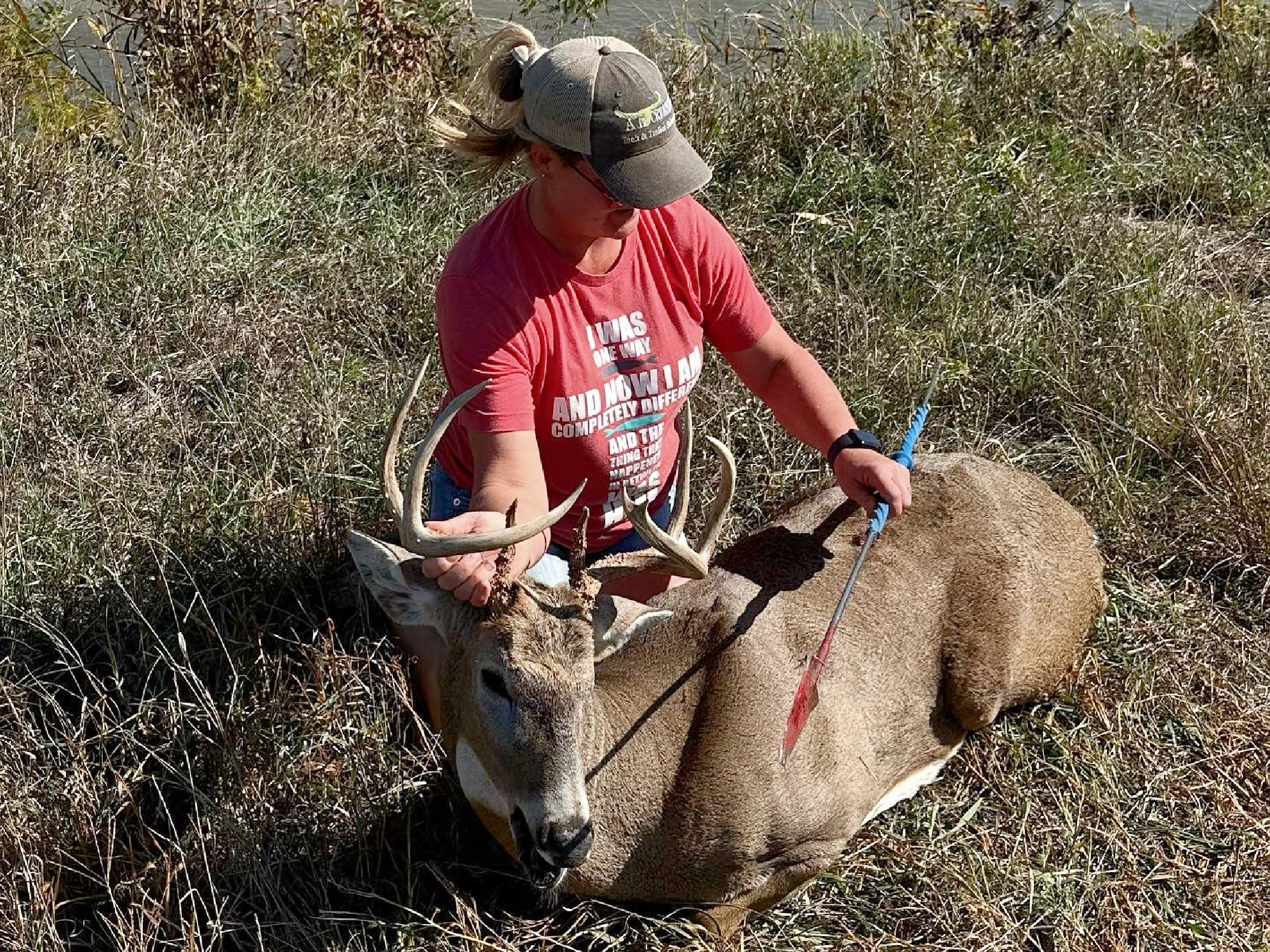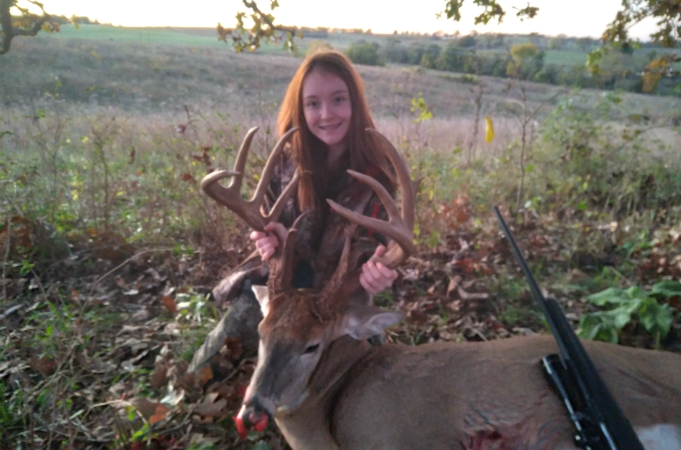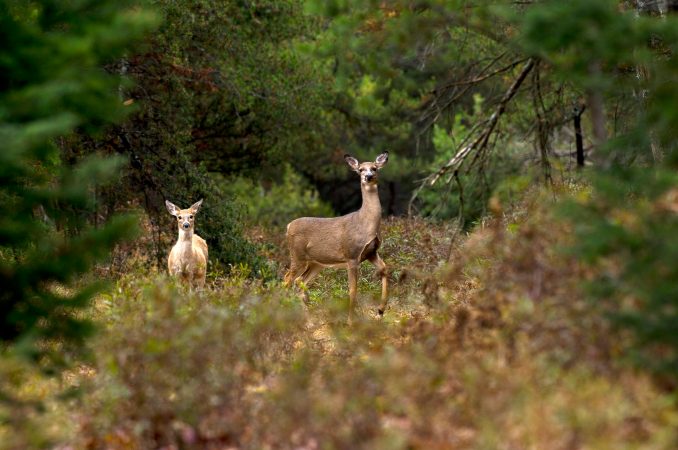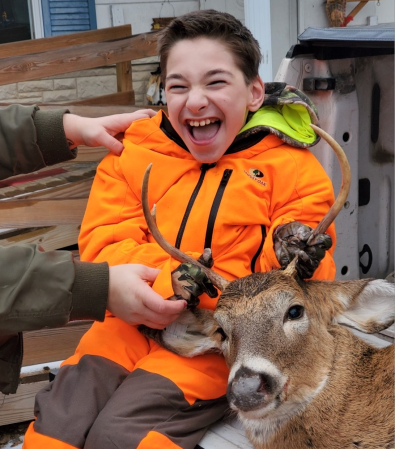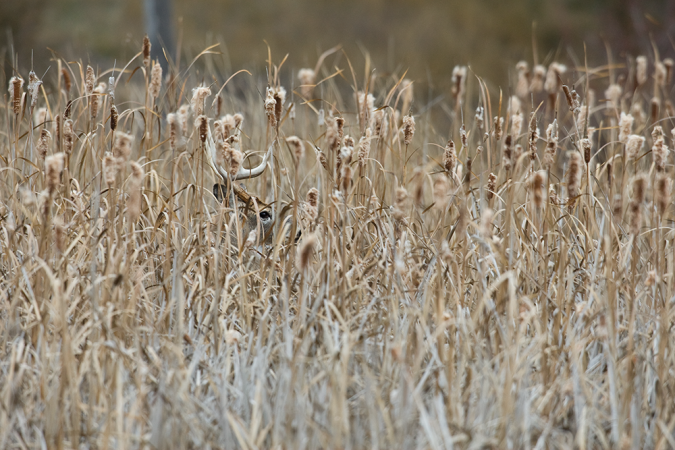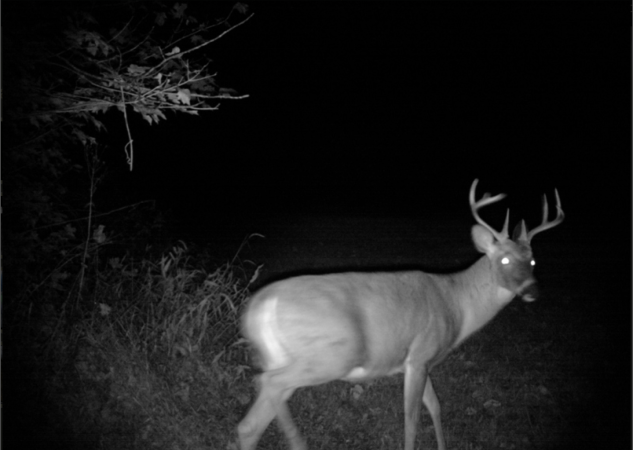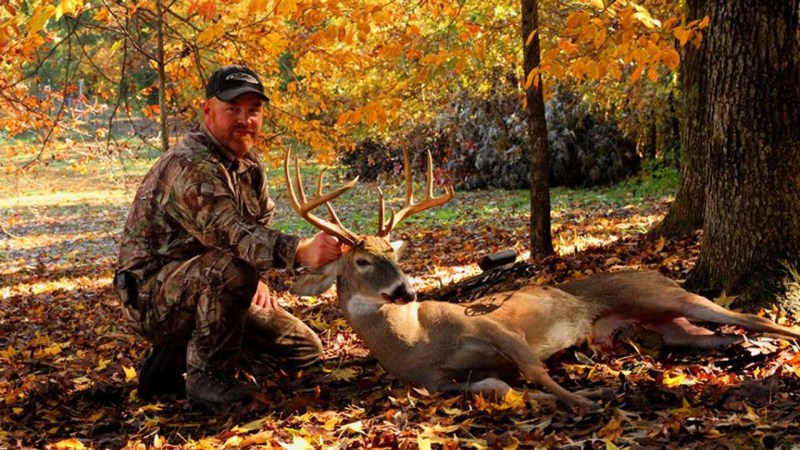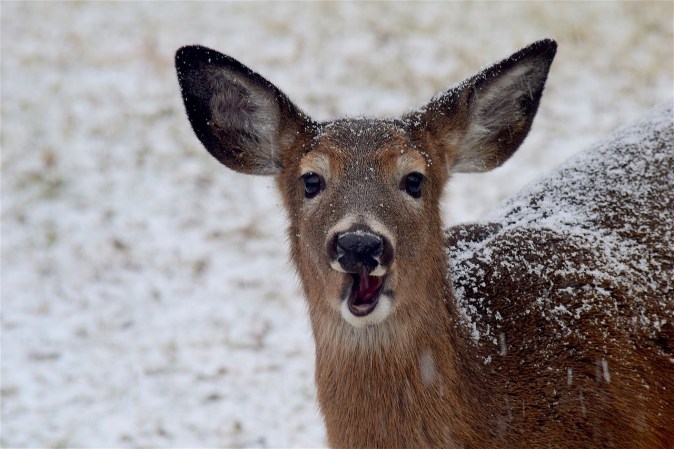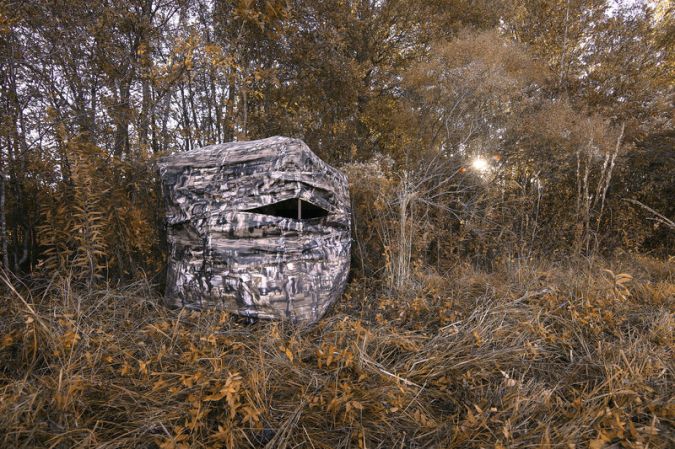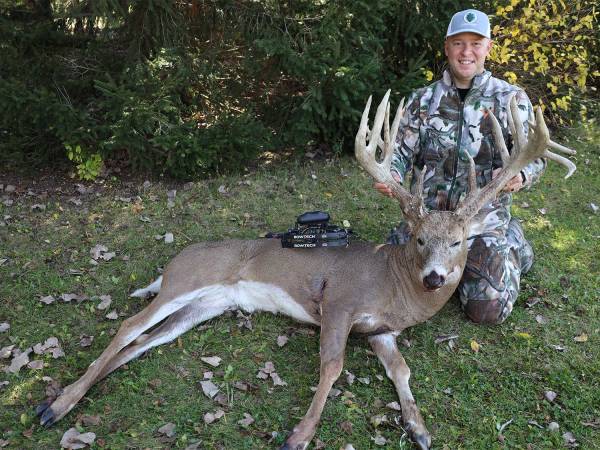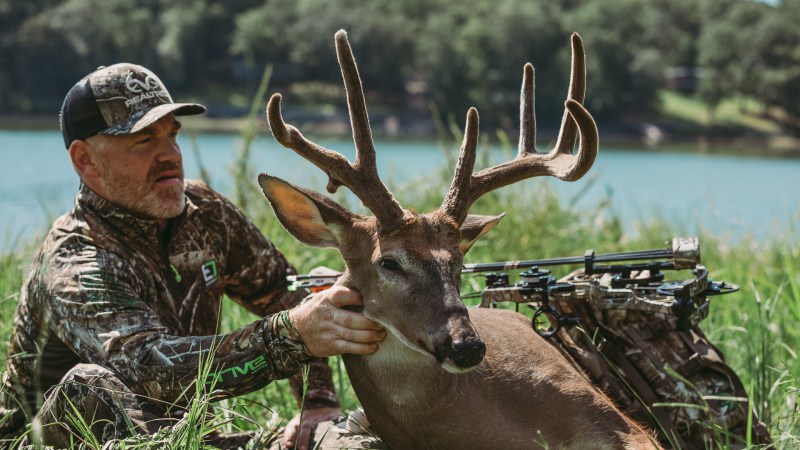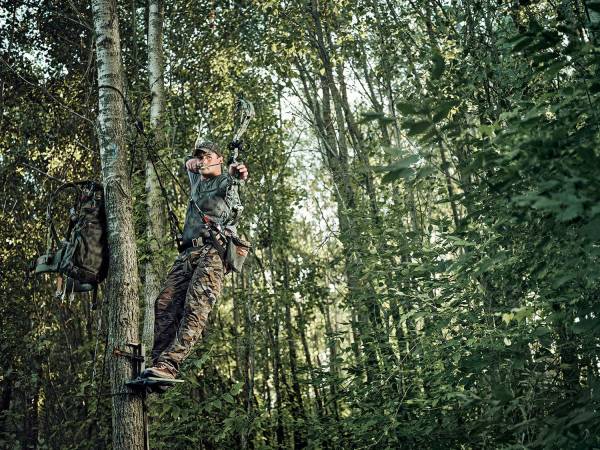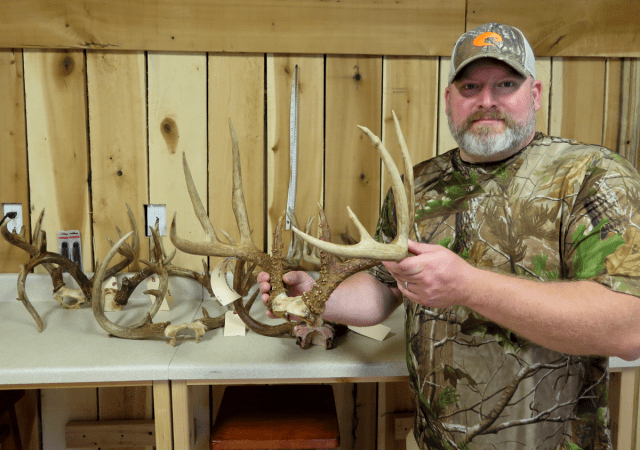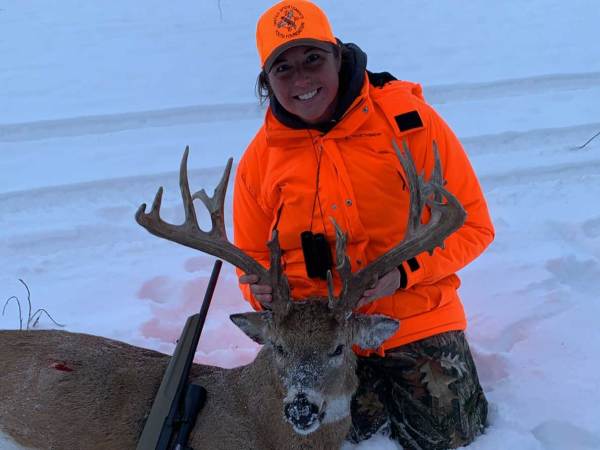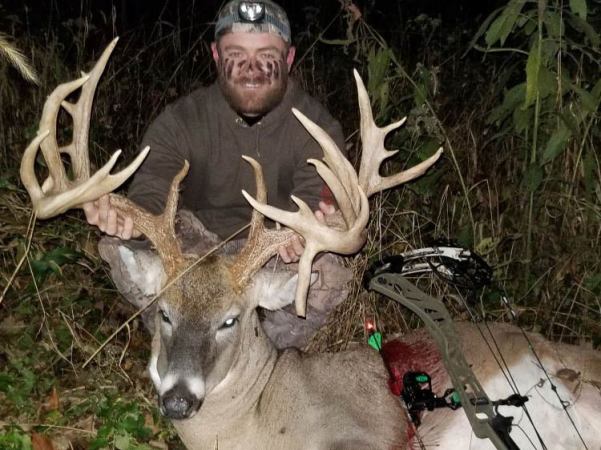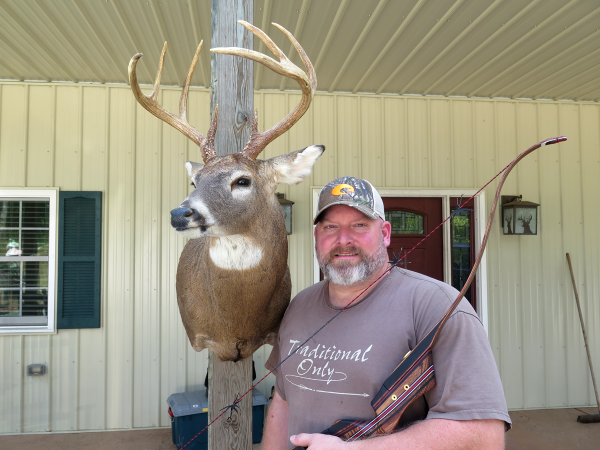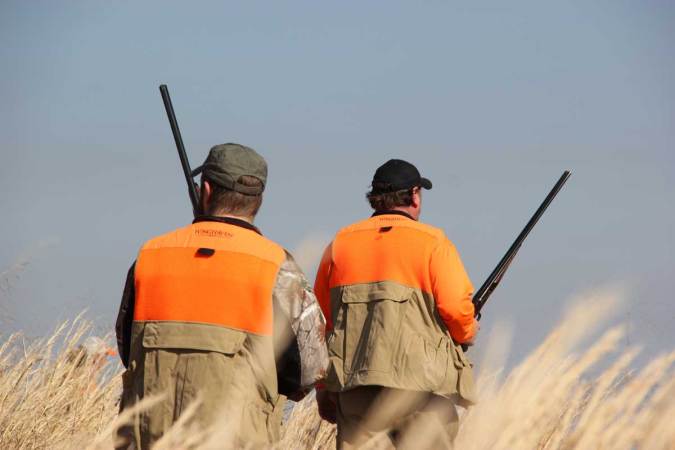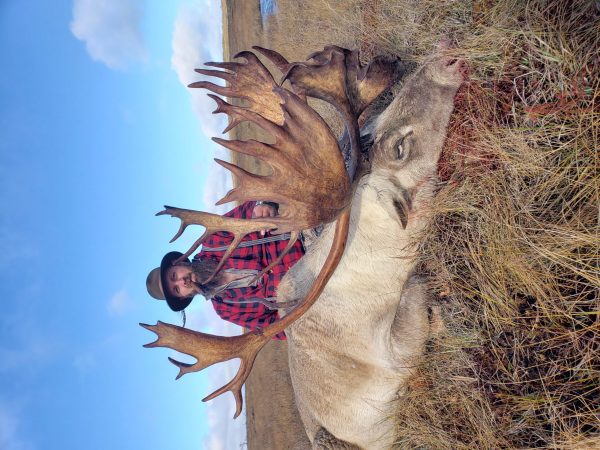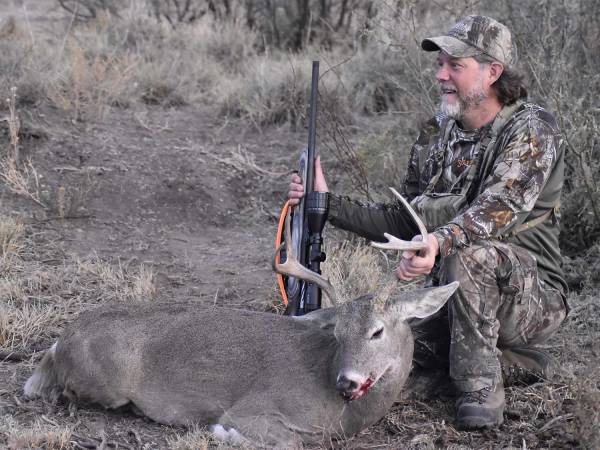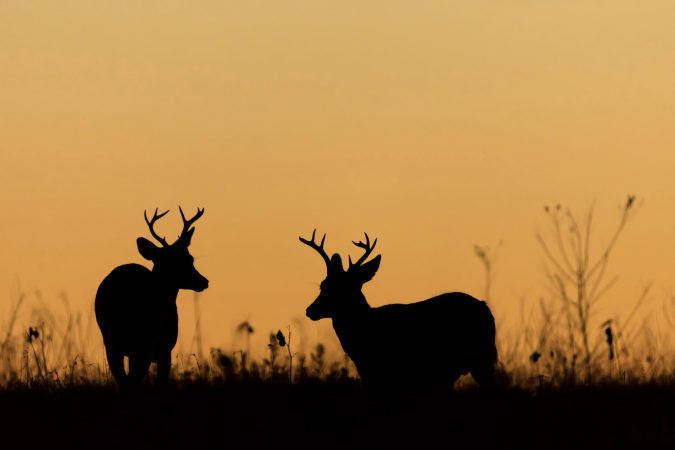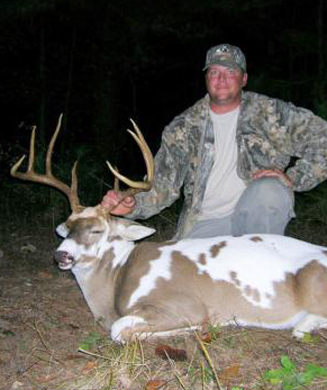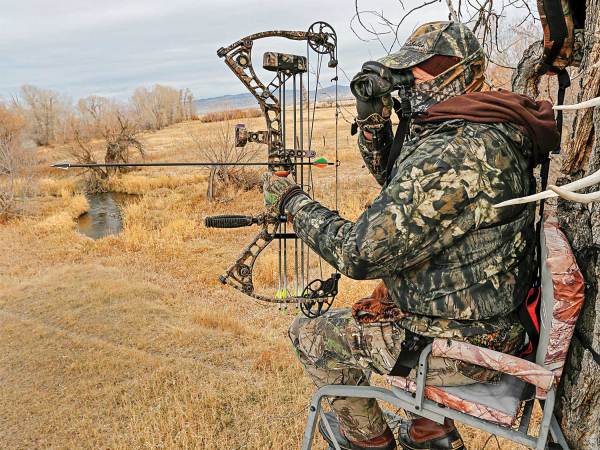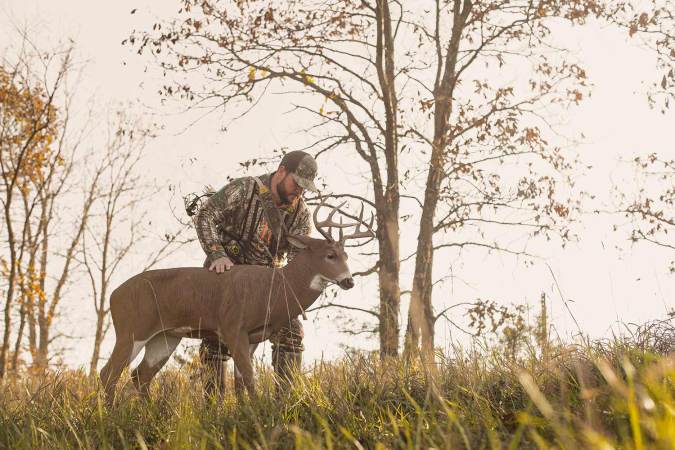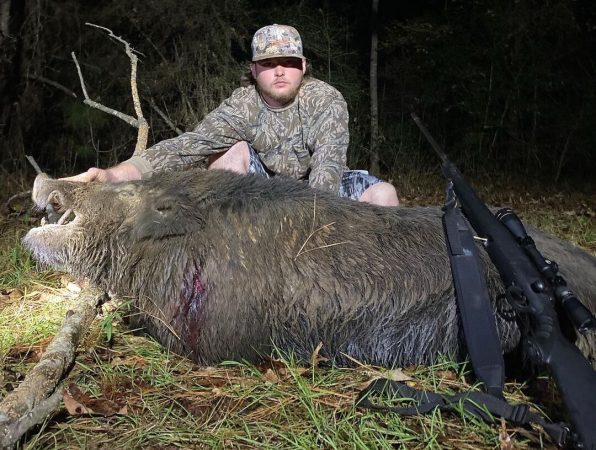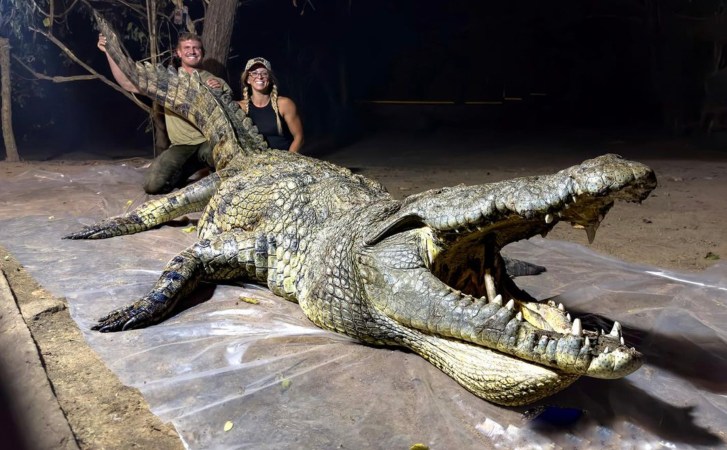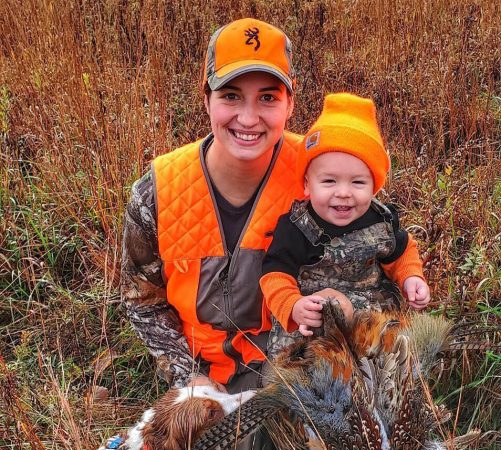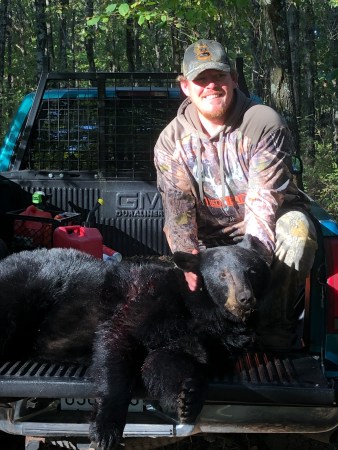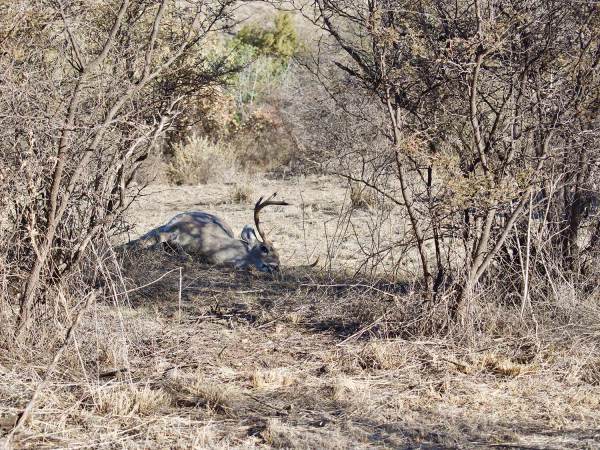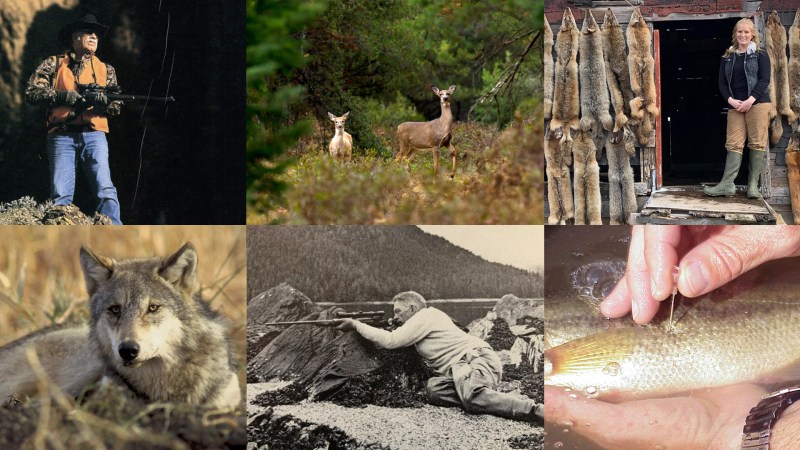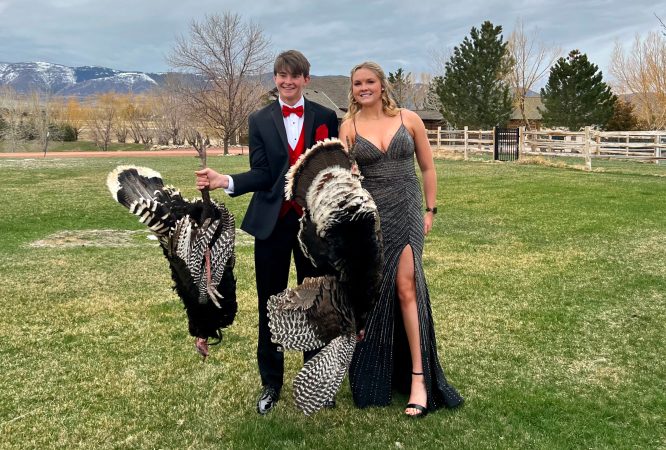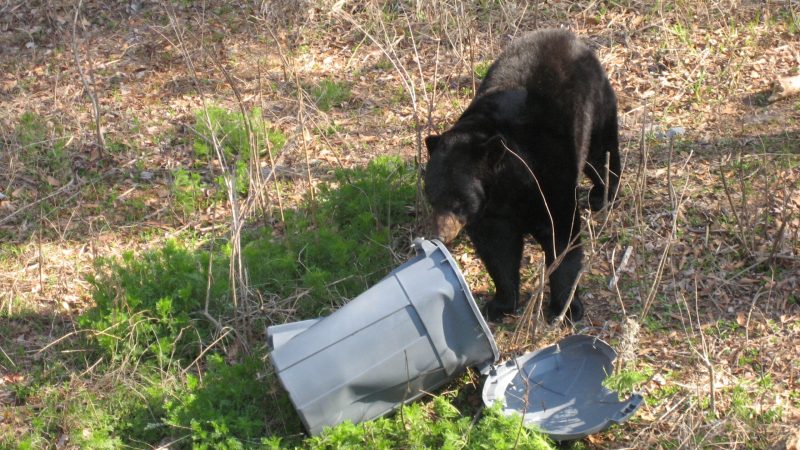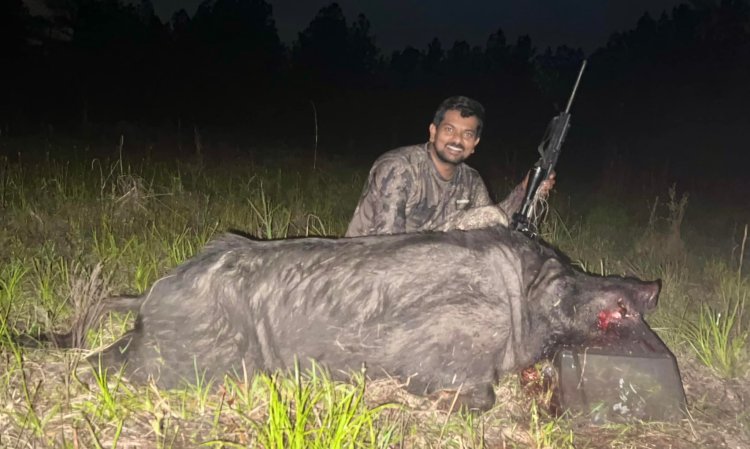Things have changed since a family friend drove a 13-year-old Angie Kokes out into a pasture to hunt deer for the first time. The way she remembers it, they sat there looking over a small canyon all day and didn’t see a single animal. Kokes thought there had to be something more to deer hunting than being stationary and searching distant terrain, so she went out by herself the next day.
Thirty-four years later on Oct. 10, she crept up over a bank on her 256-acre ranch in North Loop, Nebraska with a 6-foot, 3-inch spear in both hands, parting the tall grass and getting ready for a throw. She saw antlers glint in the sun, and then the body underneath them, about eight feet away. Years of practice, failure, and success built up to this moment. She hauled the spear back and hurled it downward. She had found there was much more to deer hunting, indeed.
Spear hunting might be the method of harvest American hunters are least familiar with. Images of loincloths, wooly mammoths, and sharpened rocks lashed to wooden shafts with rawhide come to mind. But modern iterations of spear hunting are more akin to extreme bowhunting, where proximity and patience are key. In Nebraska, spear hunting is codified in state law as a legal method of take for deer, elk, mountain sheep, turkey, and antelope, as long as spears aren’t poison-tipped or explosive.
With that said, plenty of hunters and non-hunters alike do not like nor understand how Kokes hunts and they don’t hesitate to tell her so through her social media. But she meets this opposition with open and honest conversations about her practice and mentality as a spear hunter, which she says changes minds in some instances. Kokes assuages concern about ethics and fair chase with a simple observation: she’s seen dozens of game animals run off with nonlethal bullets or broadheads lodged in their bodies. But when she spears an animal, it’s from near-touching distance and the animal dies quickly. In other words, she thinks it might be one of the most lethal forms of hunting when done properly.
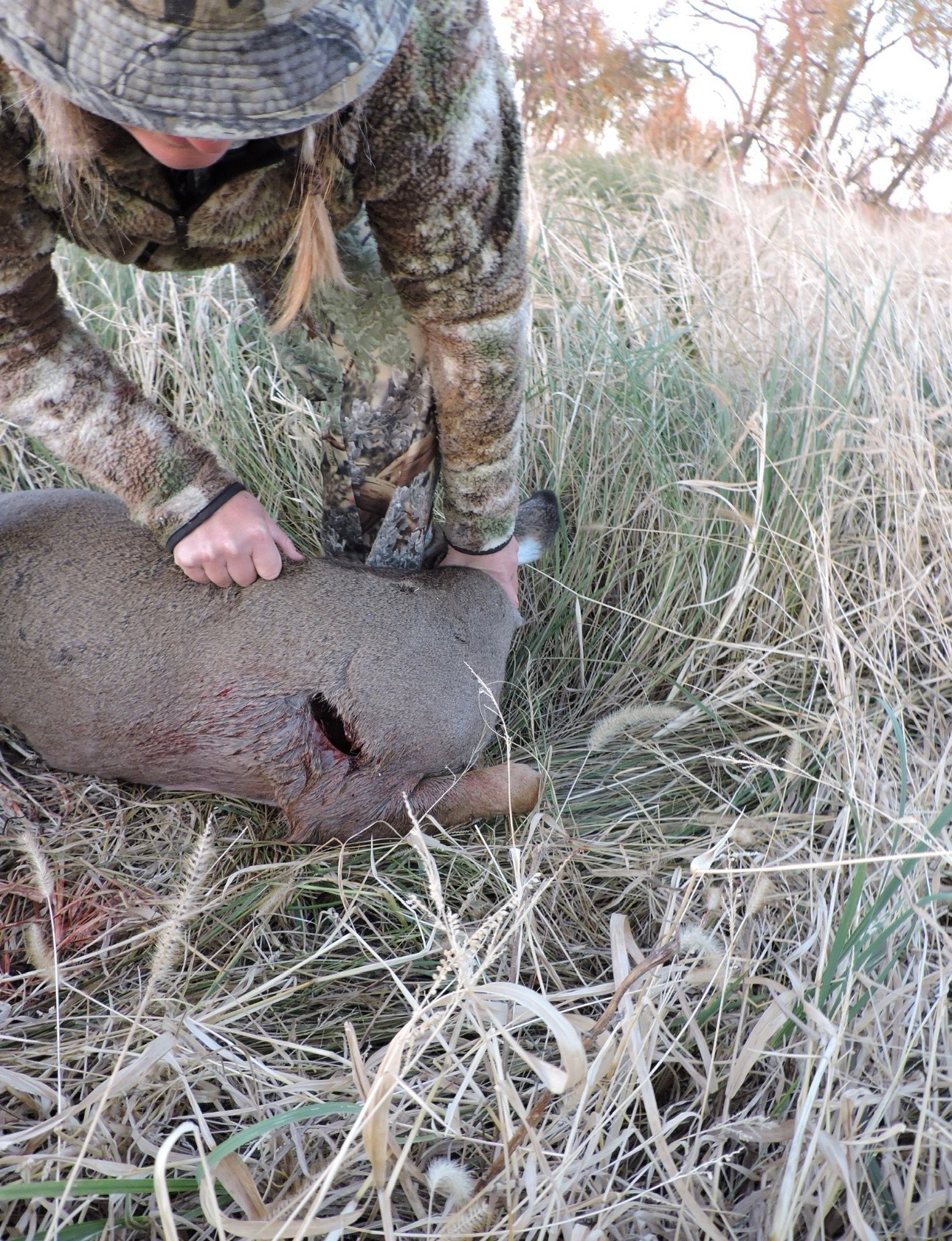
The other reason many hunters have negative ideas about spear hunting is because it’s often done over bait (which is controversial in some circles), and it’s usually presented as more of a stunt than a serious hunting method. While Kokes has hunted some animals over bait, even the harshest skeptics can’t deny that stalking within mere feet of a bedded whitetail buck takes incredible skill. It’s a testament to how seriously Kokes takes her style of hunting, and when she launched that spear on Oct. 10, she was confident it would hit home.
The Buck Stops There
A friend had tipped Kokes off to the buck, who was hanging out in a creek bottom on her property. She sprinted inside and grabbed her spears, not even taking time to change out of her t-shirt and shorts.
“If you know whitetails at all, you know they can be bedded one second and be a mile away 30 seconds later. So I didn’t feel like I had time to change into my hunting clothes,” Kokes says.
She ran back outside and started the stalk about a quarter-mile from her house.
“I knew the wind and cover were right, so I basically crept up on him over a bank,” she says. “I thought he was gone, it was so thick I couldn’t see him at all. So I reached a spear over the bank and tried to hold the weeds back so I could see down better. Around that time the light reflected off an antler and I realized he was there.”
The throw was similar to the ones she usually takes from treestands, on a downward trajectory from above. But this was the first time she’d ever thrown from the ground. Kokes prefers more angled shots where she can hit behind the shoulder and get a good exit wound, ensuring a quality blood trail. Her range tops out at 10 yards. When she saw how great this shot opportunity was, she let the spear fly.
“It hit him dead-center,” she says. “You could hear the lung pop. He jumped just a little bit, then laid right back down in the same place and expired. I really expected him to take off and run, but [the spear] is so sharp, it hit him and then it was over.”
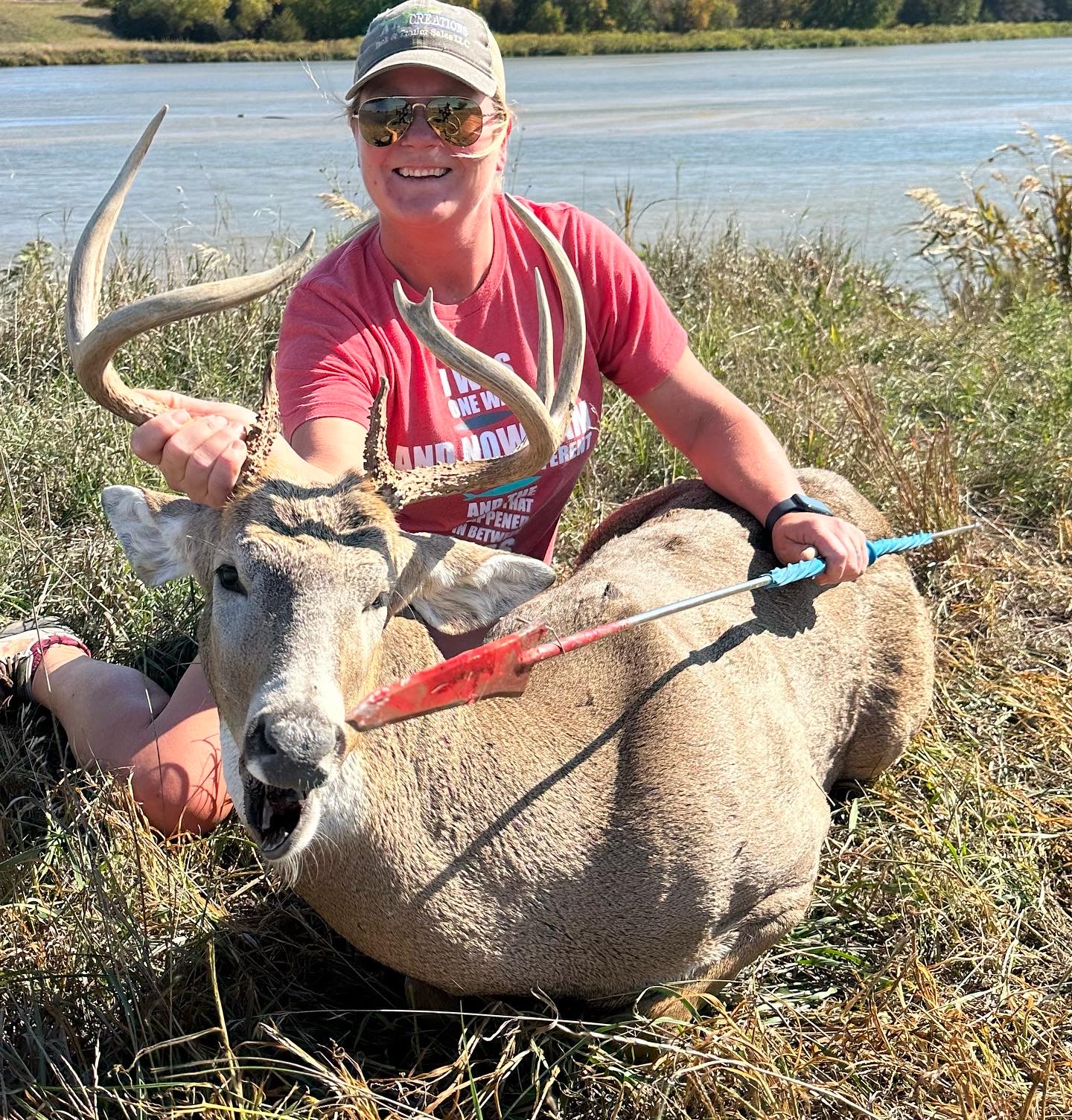
Built From the Ground Up
America isn’t quite sure how to feel about spear hunting. When celebrity hunter Josh Bowmar threw a spear rigged with a GoPro at a Canada black bear in 2016, an investigation ensued and Canada banned the practice. His wife Sarah, also a celebrity hunter and fitness influencer, was promptly dropped by Under Armour, one of her sponsors at the time. Uproar followed. Supporters of Bowmar’s tactics lit piles of tech-knit exercise clothing on fire in their driveways while critics of the spearing called for punishment. (The Bowmars were later charged with Lacey Act violations for a seperate incident but have yet to be convicted.)
But for Kokes, spear hunting is a passion, not a stunt. She practices two or three times a week, which she considers “less frequent” compared to her every-damn-day regiment when first starting out. Kokes throws Sabertooth spears designed by Tim Wells, which are lighter and thinner than standard solid-core spears and allow her to throw much harder as a result. She gets as close to her target animals as humanly possible to ensure an ethical throw and tries for a pass-through exit wound every time. Her humility comes from years of being what she considers a “really bad hunter,” so ego is the least of her concerns.
“About 15 years ago-let’s just get it out of the way-I was a terrible hunter. I had no idea what hunting actually meant,” Kokes says.
“I made an incredible shot on a doe one day from a treestand, and [my husband] Adam came to help me recover her. He kept looking at the doe, then back at the treestand. Then he goes ‘Do you want to explain to me how you dropped her in her tracks behind the treestand?’ Well I demonstrated to him how I stood out on my tiptoes with one foot, wrapped my back leg around the tree, and leaned clear out from my treestand so I could shoot her behind the tree. And this was the age before safety harnesses. So he, being a good husband, said, ‘You just lost all your treestand privileges until you can prove to me that you actually know how to hunt and that you’re not stupid.’ He took every single treestand down. I was really mad at him, but he did the right thing.”
Ultimately, Kokes chalks up her ground hunting skills to this decision.
“We joke about it now, because we could have never imagined what him putting me on the ground was going to do for my hunting,” she says. “It made me a hunter. I made mistake after mistake, but I started to learn from them.”
At the Crossroads
Over time, Kokes became a seasoned bowhunter. But a random bicep tear and other complications led to two surgeries in 2013 and 2015, after which she was uncertain about her ability to draw a compound bow. Eventually she made progress and her arm came back to life, but Adam was concerned about her getting back in the woods too early.
“He asked me one day, ‘Honey, this has been a really, really tough road for you. I know what you’re thinking, but can we just take it easy this fall, and promise me you’ll just use your crossbow and not the compound bow?’ Well, that infuriated me,” Kokes says. “I was angry for no good reason, he was just trying to protect me. But it made me so mad that I just blurted out, ‘I am not only going to shoot a deer with my compound bow this year, but I’m going to spear a bear someday.’ And we both just stopped dead in our tracks. He turned around and walked away, and all he said was, ‘shit.’ The next day, he handed me a homemade spear. Once I say I’m going to do something, come hell or high water, it’s going to happen.”
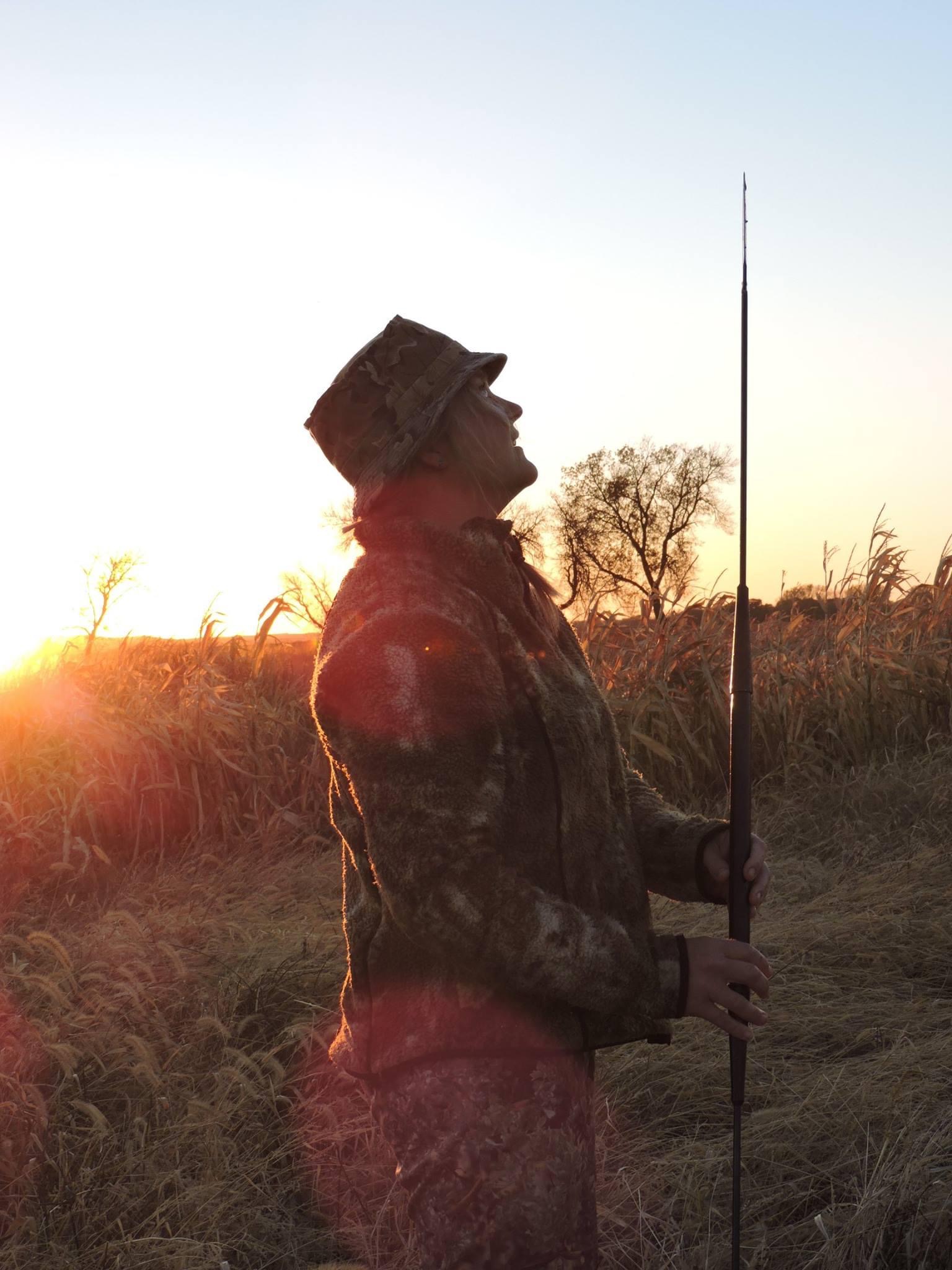
At first, Kokes struggled to find other spear hunters to learn from and engage with, but eventually she found her way. She had a friend in Ontario who she wanted to spear her bear with, but he asked that she prove she could successfully harvest an animal with a spear before she tried a bear hunt. Around this time, Adam shared with her that spear hunting big game was legal in Nebraska, so she speared a doe with a clean pass-through throw for the first time in 2016 after spooking deer away three times and missing a few throws, too.
“I waited until its head was turned completely away and nothing was going through my mind. I was completely calm, I went back to muscle memory and just let it fly. I had been concerned—what if I hit a bone? I am only a girl throwing this thing, what’s going to happen? Well, as soon as the spear hit, the deer ran off maybe 30 yards. The spear was sticking out both sides of the deer. And that’s when the buck fever hit. I’m perfectly calm until after I throw. After I throw, I’m a wreck.”
Chasing the Lifestyle
Kokes got out on her dream black bear hunt in 2018, which took place in Alaska instead of Ontario because the Bowmar controversy had triggered the Canadian spear hunting ban by then. She says that was the easiest hunt of all, since it was done over bait, which is illegal in Nebraska. She took a trip to Africa in 2021, during which she killed a variety of plains game with a spear as well. Other than those two trips, she spends most of her time chasing Nebraska whitetails.
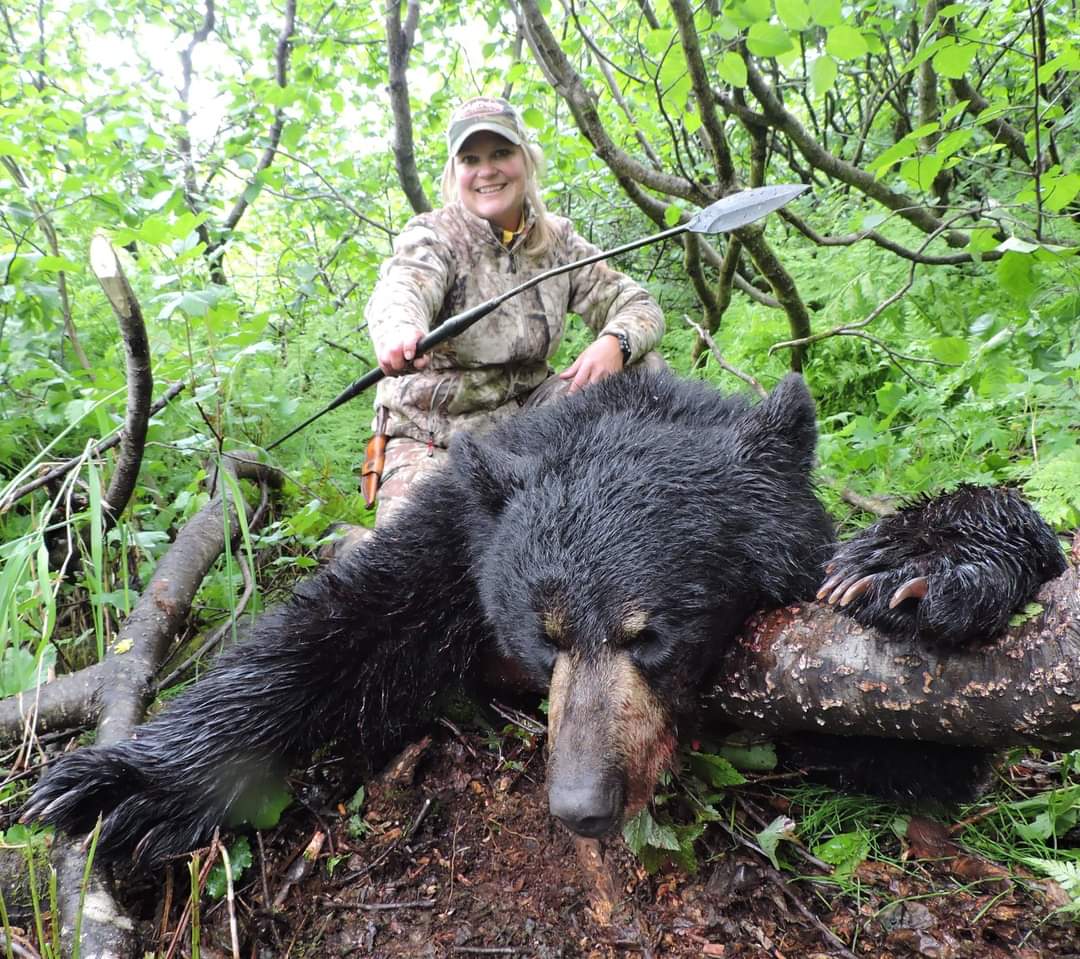
So what comes next? A 200-plus-inch whitetail buck that’s evaded Kokes for the last three years, and then maybe an elk hunt. In the meantime, she and Adam continue to run the family cattle ranch and have a trailer business, as well. Kokes says she can sell a trailer from just about anywhere, treestands and goose blinds included, so her line of work is conducive to her hunting as many days of the year as legally possible. She also leads female bird hunts and explains her mentality to other women who struggle with confidence in the field.
“I mentored a womens’ pheasant hunt this past weekend and there were several of them who were like ‘Oh, I don’t think I’ll ever be able to shoot a bird,'” Kokes says. “I won’t go into a lot of detail about what I’ve done, because the focus needs to stay on them, but I’m like ‘Oh no, trust me. You can do this. If you think you can’t, it’s just because it’s upstairs in your mind. Nothing else says you can’t.'”
The road to here has has been a long one for Kokes, from teaching herself how to hunt to giving her husband a heart attack with her arboreal gymnastic moves to killing a whitetail buck from eight feet away on the ground.
“We think about all the steps it’s taken,” Kokes says. “I’ve had people say ‘Oh you’re so lucky, this happened overnight,’ and I’m like ‘Oh no it didn’t…I’ve been hunting since I was 13 years old.”

